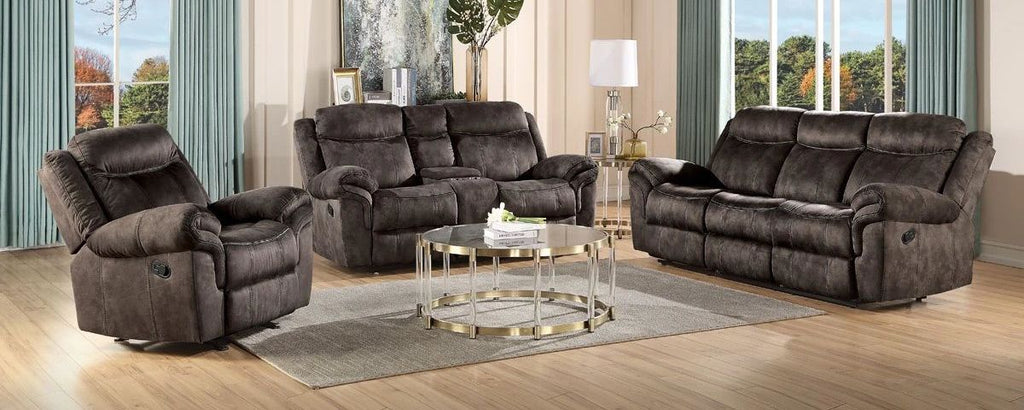Evolution of the Family Room

The family room is one of the most beloved rooms in the family home—an inviting space for gathering loved ones to watch a favourite series, enjoy a casual meal or lounge with a good book or company. However, from function to décor trends, the family room has transformed a lot over the past 100 years.
Here's a look into this beloved room's history.

1930s: Radios Were the Focus
During and prior to the 1930s, the family room functioned similar to the more formal living rooms in today's larger homes. Before there were big screen TVs, families gathered around radios—often enclosed in elaborate cabinets—to listen to the news, sports or other entertainment programs. Armchairs and coffee tables were the main furnishings, and large sectional sofas were less common. Other popular trends included:
- - The Art Deco style carried over from the roaring 1920s, which featured bold colours and geometric shapes.
- - A move toward minimalistic and practical Scandinavian décor influenced by The Great Depression, along with muted tones, such as cream, light green and light pink, became popular.

1940s: Family Room Concept is Coined
With the Second World War ramping up over the first half of the decade, interior design remained largely stagnant throughout the 1930s. The era saw more muted tones and minimalist décor. George Nelson, an American industrial designer, introduced the family room concept in his book, Tomorrow's House: A Complete Guide for the Home-Builder where he highlighted the need for a new "biggest room in the house." Families would use this room for socializing and other activities less suitable for the more formal living room space. This new room would feature furniture that was easy to clean and could withstand frequent use. Popular trends of this decade included:
- - Wall-to-wall carpet.
- - Cheerful colours.
- - Floral prints.
1950s: Comfort is Key with the Rise of the TV
In the 1950s, more of a distinction between living room and family room spaces emerged. TVs became popular in homes, making comfort and leisure a priority for the family room. At this time, pre-packaged frozen TV dinners also rose in popularity. Armchairs were still used more than sofas, as they allowed for gathering close to the TV, which weren't as large and convenient to use as the TVs of today. Popular trends of this decade included:
- - Pastel colour palettes (such as: pink, mint green, turquoise and yellow), Scandinavian tones (such as: greys, browns and creams), and modern hues (such as: bright red, orange, yellow, blue, black and white).
- - Vibrant décor and furnishings influenced by space exploration and innovations in both science and technology.
- - Easy-to-clean laminated plywood furniture (e.g. coffee tables).
- - Futuristic furnishings, including sofas and armchairs with rounded edges, and the boomerang-shaped coffee table.
- - Fabrics featuring fruit and polka dots.

1960s & 1970s: Family Room Décor Makes a Bold Statement
In the 1960s and 1970s, family room décor became more creative and personalized. Popular trends included:
- - Large sectional sofas in vibrant colours and materials.
- - Open shelving displaying vases, art and other décor accessories.
- - Lamps in interesting shapes and colourful shades.
- - Floral wallpaper.
- - Animal print area rugs and the infamous shag carpeting.
- - Wood paneling on walls.
The 1970s also introduced and popularized earthy tones and materials, including stone and wicker.

1980s & 1990s: The Rise of Video Game Consoles
Video game consoles became popular in homes in the 1980s, giving families another reason to gather in this space. TVs and TV units occupied significant space in the family room—far from the thin, sleek TVs that can be found mounted on family room walls today. Popular trends within these decades included:
- - Open concept kitchens and family rooms meant you could move from one room to the next for easy entertaining.
- - Floor-to-window curtains with ruffles or lace trim.
- - Floral or chintz prints, and preppy pastel palettes.
- - Neon colors and bold, geometric shapes.
- - The "Shabby chic" trend emerged and included distressed or antique-looking furniture.
- - Shaggy, wall-to-wall carpeting remained popular.

2000-2010: Home Theatres Reign Supreme
Family rooms become focused on creating a "home theatre" experience with oversized speakers and entertainment centres for DVD players, flat-screen TVs and Blu-rays. Popular trends of this decade included:
- - Materials and colours inspired by nature, as society became more environmentally-conscious, including recycled materials and green accent walls.
- - Walls in dark reds and browns.
- - Poufs that double as ottomans and quick seating.
- - Minimalism also emerged in the 2010s and quickly permeated the home furnishing realm.

2020: Old Becomes New Again
Today, the family room remains focused on creating a comfortable, inviting space for family and friends for lounging or entertainment. If you are reinventing your family room space in 2020, consider drawing inspiration from past trends, and giving them a modern twist. Trends for 2020 include:
- - Bold colours, including Classic Blue, which is the Pantone colour of the year.
- - Vintage art and statement pieces, playing off of the "shabby chic" look of the 1980s and 1990s.
- - Floral wall paper in bold colours and patterns.
- - Visually interesting rattan or wicker furniture pieces.
- - Velvet sofas in vibrant colours.
- - Colour palettes and furniture pieces inspired by nature (think: wood, metals and stone).
- - Maximalism and filling your space with meaningful art and décor.
The family room has come a long way over the past century, with trends in décor reflecting the societal mood, events and advancements of each decade. Despite these changes, the family room remains the heart of the home, bringing family and friends together for both entertainment and relaxation.
- Tags: Family Room Living Room


